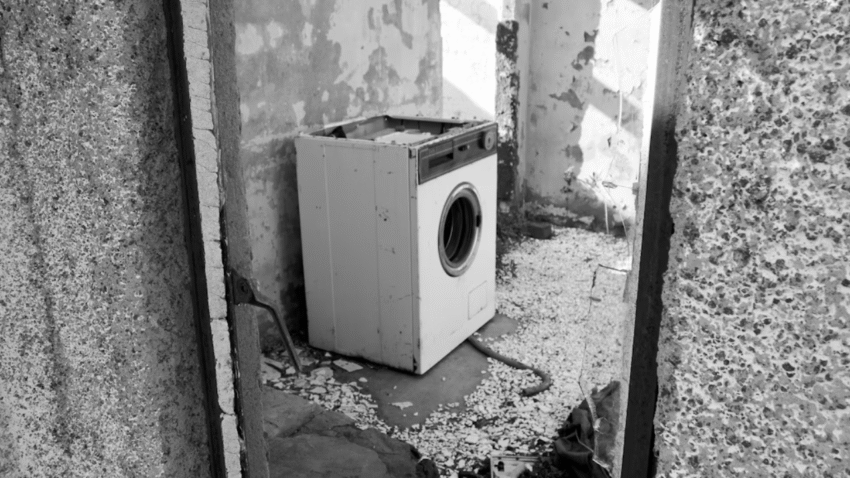Introduction
Wrinkled clothes can make even the most stylish outfit look unpolished. While dry cleaners offer professional pressing services, you can achieve the same crisp, smooth finish right at home with the right technique. Learning how to iron clothes like a professional at home will save you money, keep your wardrobe looking sharp, and help your garments last longer.
Why Professional-Style Ironing Matters for Your Laundry Routine
Ironing clothes properly isn’t just about appearance—it can:
- Boost confidence – Smooth, well-pressed clothes look cleaner and more put-together.
- Extend garment life – Proper ironing techniques reduce fabric stress and damage.
- Save money – Avoid frequent dry cleaning bills.
- Enhance fabric feel – Heat and steam can restore the softness and shape of certain materials.
- Support better storage – Wrinkle-free clothes store better and save closet space.
When combined with your washer, dryer, and a good laundry organization system, professional-style ironing elevates your entire laundry process.
Step-by-Step Guide to Ironing Clothes Like a Professional
1. Set Up Your Ironing Station
Choose a well-lit, stable space with an ironing board adjusted to a comfortable height (your elbows should be slightly bent). Keep your iron’s power cord out of the way to prevent tangling.
Tools you’ll need:
- Steam iron with adjustable settings.
- Sturdy ironing board.
- Spray bottle with distilled water.
- Pressing cloth (cotton or muslin).
- Hanger for each garment.
2. Sort Clothes by Fabric Type
Different fabrics require different ironing temperatures:
- Low heat – Silk, nylon, polyester.
- Medium heat – Wool, rayon.
- High heat – Cotton, linen.
Iron delicate fabrics first, then move to heavier fabrics as the iron heats up.
3. Check Clothing Labels
Always follow the garment care label. Some items may require dry ironing (no steam), low heat, or no ironing at all.
4. Prep Clothes Before Ironing
- Lightly mist fabrics with water to help release wrinkles.
- For stubborn wrinkles, hang clothes in the bathroom during a hot shower for 5–10 minutes before ironing.
- Close zippers, button buttons, and turn dark or delicate fabrics inside out to prevent shine marks.
5. Start with the Collar and Cuffs
For shirts and blouses, begin with the small, detailed areas:
- Lay the collar flat, press from the points toward the center.
- Move to the cuffs, ironing the inside first, then the outside.
- Smooth the yoke (shoulder area) before tackling the main body.
6. Iron in Sections
- Shirts/Blouses: After collar and cuffs, move to sleeves (from shoulder to cuff), then the front panels, and finally the back.
- Pants/Trousers: Start with pockets and waistband, then move to legs, ironing from top to bottom. For creased trousers, line up seams before pressing the crease.
- Skirts/Dresses: Begin with the waistband or bodice, then work down toward the hem, rotating the garment on the board.
7. Use the Pressing Cloth for Delicates
Place a pressing cloth between the iron and the garment to prevent scorching, shine marks, or fabric damage.
8. Let Clothes Cool Before Wearing or Storing
Freshly ironed clothes need a few minutes to set. Hang them immediately on a hanger in an open space to cool completely before placing them in the closet.
Common Mistakes to Avoid
- Ironing Dirty Clothes
Heat can set stains permanently—always wash before ironing. - Using the Wrong Heat Setting
Too much heat can burn delicate fabrics, too little won’t remove wrinkles effectively. - Rushing the Process
Moving the iron too quickly can leave wrinkles behind; press firmly and steadily. - Overusing Steam on Certain Fabrics
Wool and silk can be damaged by excessive steam—check fabric care instructions. - Not Cleaning Your Iron
Mineral buildup can transfer to clothes. Clean your iron’s plate regularly according to the manufacturer’s directions.
Extra Laundry Tips & Hacks
- Invest in a Good Steam Iron – Higher-quality irons heat faster, maintain consistent temperatures, and deliver better steam output.
- Iron in Batches – Group clothes by fabric type and temperature setting to save time.
- Use Vertical Steaming – For quick touch-ups or delicate fabrics, hang garments and steam instead of ironing flat.
You might also enjoy our guide on How to Dry Clothes Without a Dryer Indoors, which includes tips for reducing wrinkles before ironing.
Conclusion
Ironing clothes like a professional at home comes down to preparation, the right tools, and a systematic approach. By working in sections, adjusting heat for different fabrics, and using steam strategically, you can achieve crisp, polished results without leaving the house.
📌 Extra Tip: Make ironing part of your weekly laundry routine rather than waiting for a huge pile to build up—it’s faster, easier, and keeps your wardrobe looking its best. Bookmark this guide for whenever you need a refresher on professional ironing techniques.
